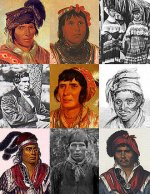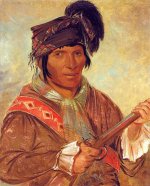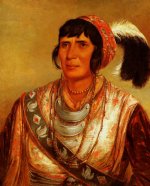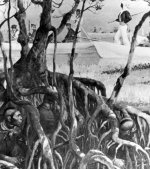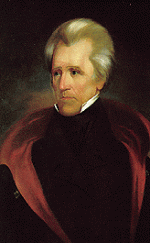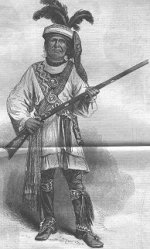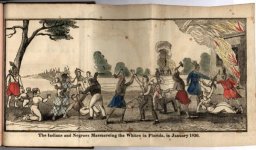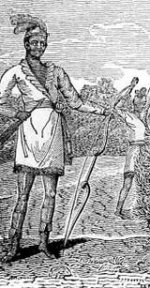The FIRST SEMINOLE INDIAN WAR !
1814-1819
PART ONE
First Seminole War
Andrew Jackson led an invasion of Florida during the First Seminole War.
The beginning and ending dates for the First Seminole War are not firmly established. The U.S. Army Infantry indicates that it lasted from 1814 until 1819.[11] The U.S. Navy Naval Historical Center gives dates of 1816-1818.[8] Another Army site dates the war as 1817-1818.[12] Finally, the unit history of the 1st Battalion, 5th Field Artillery describes the war as occurring solely in 1818.[13]
[edit]Creek War and the Negro Fort
The next big event to affect the Seminoles of Florida was the Creek War of 1813-1814. Andrew Jackson became a national hero in 1814 after his victory over the Creek Red Sticks at the Battle of Horseshoe Bend. After his victory, Jackson forced the Treaty of Fort Jackson on the Creeks, resulting in the loss of much Creek territory in southern Georgia and central and southern Alabama. As a result, many of the Creeks left Alabama and Georgia and moved to Florida.[14]
Also in 1814, Britain, at war with the United States, landed forces in Pensacola and other places in West Florida and began to recruit Indian allies. In May 1814, a British force entered the mouth of the Apalachicola River, handing out arms to Seminoles, Creeks and runaway slaves. The British moved upriver and began building a fort at Prospect Bluff. After the British and their Indian allies were beaten back from an attack on Mobile, an American force led by General Jackson drove the British out of Pensacola. Work on the Prospect Bluff fort continued, however. When the war ended, the British forces left West Florida, except for Major Edward Nicholls of the Royal Marines. He directed the provisioning of the fort with cannon, muskets and ammunition, and told the Indians that the Treaty of Ghent guaranteed the return of all Indian lands lost during the war, including the Creek lands in Georgia and Alabama. The Seminoles were not interested in holding a fort, however, and returned to their villages. Before he left in the summer of 1815, Major Nicholls invited the runaway slaves in the area to take possession of the fort. Word spread about the fort, and it was soon being called the "Negro Fort" by whites in the Southern United States, who saw it as a dangerous inspiration for their slaves to run away or revolt.[15]
Portrait of Edmund Pendleton Gaines
Andrew Jackson wanted to eliminate the Negro Fort, but it was in Spanish territory. In April 1816, he informed the governor of West Florida that if the Spanish did not eliminate the fort, he would. The governor replied that he did not have the means at his disposal to take the fort. Jackson assigned Brig. Gen. Edmund Pendleton Gaines to deal with the fort. Gaines directed Col. Duncan Lamont Clinch to build Fort Scott on the Flint River just north of the Florida border. Gaines then made known his intention to supply Fort Scott from New Orleans via the Apalachicola River, which would mean passing through Spanish territory and past the Negro Fort. Gaines told Jackson that using the Apalachicola to supply Fort Scott would allow the U.S. Army to keep an eye on the Seminoles and the Negro Fort, and if the fort fired on the supply boats, it would give the Americans an excuse for destroying the fort.[16]
A supply fleet for Fort Scott reached the Apalachicola in July 1816. Clinch marched down the Apalachicola with a force of more than 100 American soldiers and about 150 Creeks. The supply fleet met Clinch at the Negro Fort, and the two gunboats with the fleet took positions across the river from the fort. The blacks in the fort fired their cannon at the U.S. soldiers and their Creek allies, but had no training or experience in aiming the cannon. The Americans fired back, and the ninth shot fired by the gunboats, a "hot shot" (a cannon ball heated to a red glow), landed in the fort's powder magazine. The resulting explosion, which was heard more than 100 miles (160 km) away in Pensacola, leveled the fort. Of about 320 people who had been in the fort, more than 250 died instantly, and many more died from their injuries soon after. After the destruction of the fort, the U.S. Army withdrew from Florida, but American squatters and outlaws carried out raids against the Seminoles, killing the Indians and stealing their cattle. Resentment over the killings and thefts committed by white Americans spread among the Seminoles, leading to retaliation, particularly stealing cattle back from the settlers. On February 24, 1817, the Seminoles murdered Mrs. Garrett, a woman living in Camden County, Georgia, and her children, one three years old and the other two months old.[17][18]
[edit]Fowltown and the Scott Massacre
Fowltown was a Mikasuki village in southwestern Georgia, about 15 miles (24 km) east of Fort Scott. Chief Neamathla of Fowltown got into a dispute with the commander of Fort Scott over the use of land on the eastern side of the Flint River, essentially claiming Mikasuki sovereignty over the area. The land in southern Georgia had been ceded by the Creeks in the Treaty of Fort Jackson, but the Mikasukis did not consider themselves Creek, did not feel bound by the treaty, and did not accept that the Creeks had any right to cede Mikasuki land. In November 1817, General Gaines sent a force of 250 men to seize Neamathla. The first attempt was beaten off by the Mikasukis. The next day, November 22, 1817, the Mikasukis were driven from their village. Some historians date the start of the war to this attack on Fowltown. David Brydie Mitchell, former governor of Georgia and Creek Indian agent at the time, stated in a report to Congress that the attack on Fowltown was the start of the First Seminole War.[19]
A week later a boat carrying supplies for Fort Scott, under the command of Lt. R. W. Scott, was attacked on the Apalachicola River. There were forty to fifty people on the boat, including twenty sick soldiers, seven wives of soldiers, and possibly some children. (While there are reports of four children being killed by the Seminoles, they were not mentioned in early reports of the massacre, and their presence has not been confirmed.) Most of the boat's passengers were killed by the Indians. One woman was taken prisoner, and six survivors made it to the fort.[20]
General Gaines had been under orders not to invade Florida, later amended to allow short intrusions into Florida. When news of the Scott Massacre on the Apalachicola reached Washington, D.C., Gaines was ordered to invade Florida and pursue the Indians but not to attack any Spanish installations. However, Gaines had left for East Florida to deal with pirates who had occupied Fernandina. Secretary of War John C. Calhoun then ordered Andrew Jackson to lead the invasion of Florida.[21]
[edit]Jackson invades Florida
Jackson gathered his forces at Fort Scott in March 1818, including 800 U.S. Army regulars, 1,000 Tennessee volunteers, 1,000 Georgia militia,[22] and about 1,400 friendly Lower Creek warriors. On March 13, Jackson's army entered Florida, marching down the Apalachicola River. When they reached the site of the Negro Fort, Jackson had his men construct a new fort, Fort Gadsden. The army then set out for the Mikasuki villages around Lake Miccosukee. The Indian town of Tallahassee was burned on March 31, and the town of Miccosukee was taken the next day. More than 300 Indian homes were destroyed. Jackson then turned south, reaching St. Marks on April 6.[23]
At St. Marks Jackson seized the Spanish fort. There he found Alexander George Arbuthnot, a Scottish trader working out of the Bahamas. He traded with the Indians in Florida and had written letters to British and American officials on behalf of the Indians. He was rumored to be selling guns to the Indians and to be preparing them for war. He probably was selling guns, since the main trade item of the Indians was deer skins, and they needed guns to hunt the deer. Two Indian leaders, Josiah Francis, a Red Stick Creek, also known as the "Prophet" (not to be confused with Tenskwatawa), and Homathlemico, had been captured when they had gone out to an American ship flying the British Union Flag that had anchored off of St. Marks. As soon as Jackson arrived at St. Marks, the two Indians were brought ashore and hanged.[24]
Jackson left St. Marks to attack villages along the Suwannee River, which were occupied primarily by fugitive slaves. On April 12, the army found a Red Stick village on Econfina River. Close to 40 Red Sticks were killed, and about 100 women and children were captured. In the village, they found Elizabeth Stewart, the woman who had been captured in the attack on the supply boat on the Apalachicola River the previous November. Harassed by Black Seminoles along the route, the army found the villages on the Suwannee empty. About this time, Robert Ambrister, a former Royal Marine and self-appointed British "agent", was captured by Jackson's army. Having destroyed the major Seminole and black villages, Jackson declared victory and sent the Georgia Militia and the Lower Creeks home. The remaining army then returned to St. Marks.[25]





